Order Araneae Family Araneidae Higher classification Orb-weaver spider | Scientific name Araneus Rank Genus | |
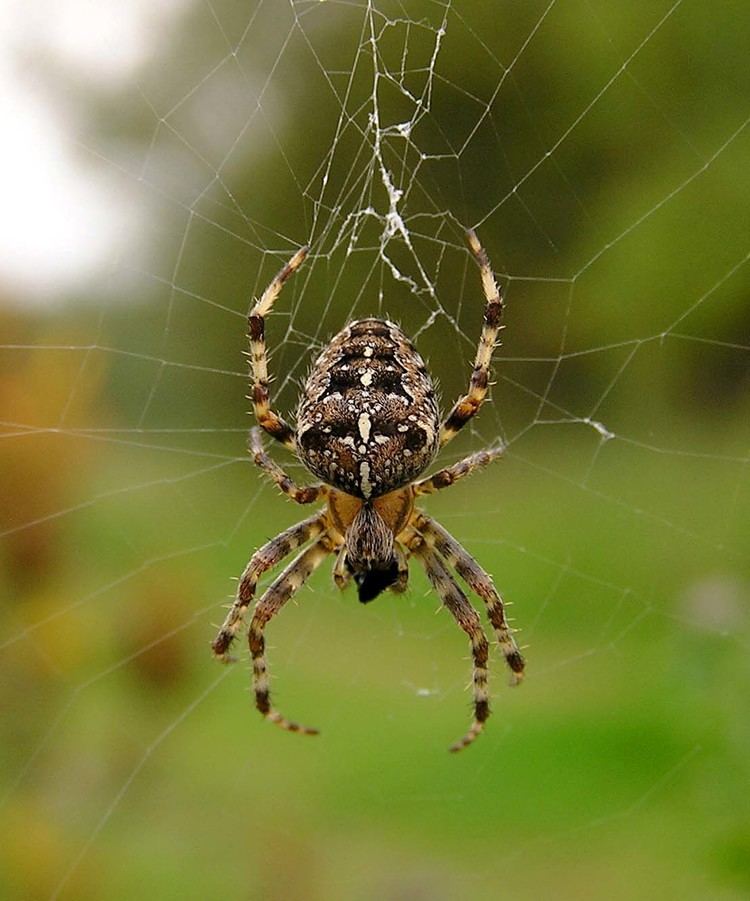 | ||
Lower classifications European garden spider, Araneus quadratus, Marbled orb‑weaver, Barn spider, Araneus ventricosus | ||
Araneus is a genus of common orb-weaving spiders. It includes about 650 species, among which are the European garden spider and the barn spider.
Contents
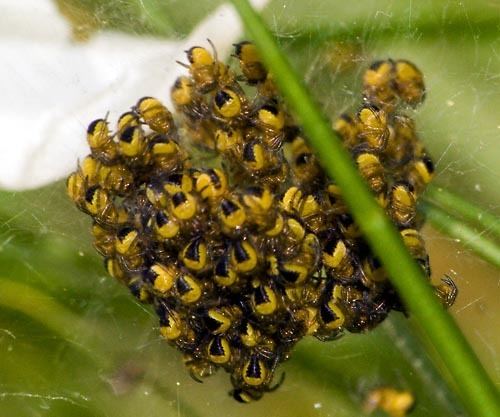
Common garden spider araneus diadematus mating
Description
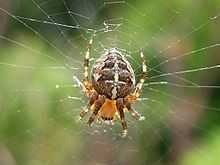
Spiders of this genus present perhaps the most obvious case of sexual dimorphism among all of the orb-weaver family, with males being normally 1⁄3 to 1⁄4 the size of females. In A. diadematus, for example, last molt females can reach the body size of up to 1 in (2.5 cm), while most males seldom grow over 0.3 in (1 cm), both excluding legspan. Males are differentiated from females by a much smaller and more elongated abdomen, longer legs, and the inability to catch or consume prey bigger than themselves.
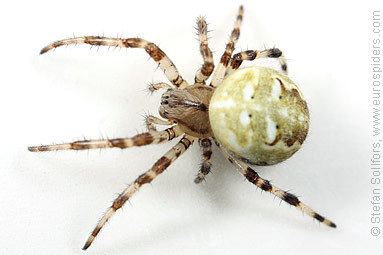
In females, the epigyne has a long scape (a tongue-like appendage). Male pedipalps have a hook-like terminal apophysis. Abdominal tubercles are present anterolaterally.
Taxonomic history
Araneus was originally called Epeira. The latter name is now considered a junior synonym of Araneus.
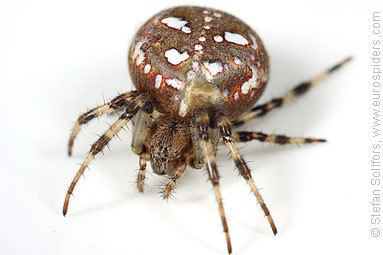
It was first coined by Charles Athanase Walckenaer in 1805, for a range of spiders now considered Araneidae (orb-weavers). Over time, a rather diverse set of spiders was grouped under the genus Epeira, including species from the modern families Araneidae, Mimetidae (Mimetus syllepsicus described by Hentz, 1832), Nephilidae, Tetragnathidae, Theridiidae, Theridiosomatidae (Theridiosoma gemmosum, described by L. Koch, 1877 as Theridion gemmosum), Titanoecidae (Nurscia albomaculata, described by Lucas, 1846 as Epeira albo-maculata) and Uloboridae (Uloborus glomosus, described by Walckenaer, 1842 as Epeira glomosus). Epeira cylindrica O. P-Cambridge, 1889 was at a time placed in Linyphiidae and is considered incertae sedis, as is "Araneus" cylindriformis (Roewer, 1942).
Epeira was synonymized with the genus Aranea by Leach, 1815, and with Araneus by Simon, 1904.
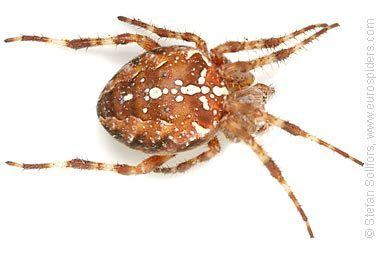
During the 19th century, the genus Epeira was broadly used in a manner akin to the then all-encompassing salticid genus Attus. However, from 1911 up until its final reference in 1957, its usage in scientific publications significantly dwindled, with only a few authors, notably Franganillo (in 1913 and 1918), Hingston (1932), Kaston (1948), and Marples (1957), continuing to employ the genus in their works. In 1944, Chamberlin and Ivie introduced a new species named Epeira miniata, but this classification was not accepted.

Jean-Henri Fabre refers to Argiope spiders as Epeira in his 1928 book The Life of the Spider (La Vie des araignées), within the family "Epeirae". James Henry Emerton also uses the genus Epeira in his 1902 book The Common Spiders of the United States, but refers to spiders mostly now considered Araneus. The popular 1893 book American Spiders and their Spinningwork by Henry Christopher McCook also uses Epeira extensively.
The short documentary Epeira diadema (1952) by Italian director Alberto Ancilotto was nominated for an Oscar in 1953. It is about the spider today known as Araneus diadematus.
Venom
Araneus spiders possess various venoms, but will deliver a dry bite on 8 of 10 occasions. Females bite more often than males, who would rather flee or feign death.
